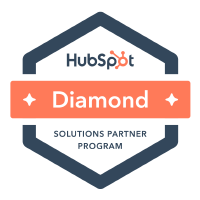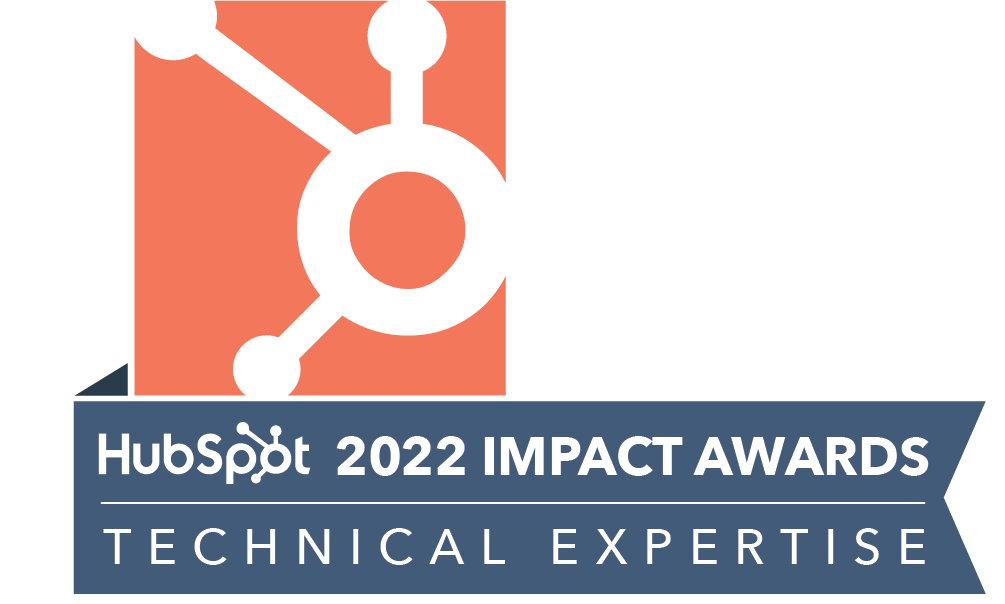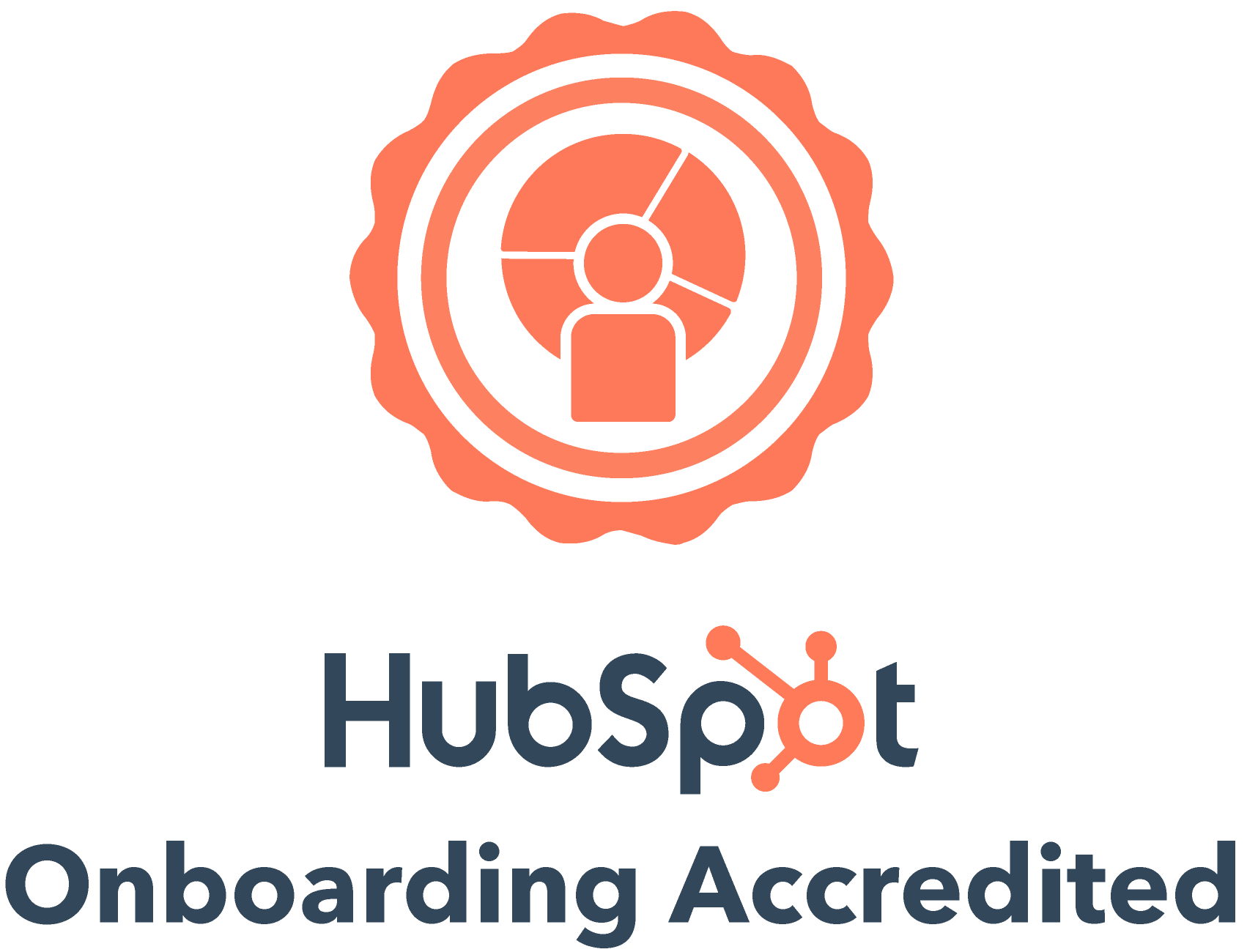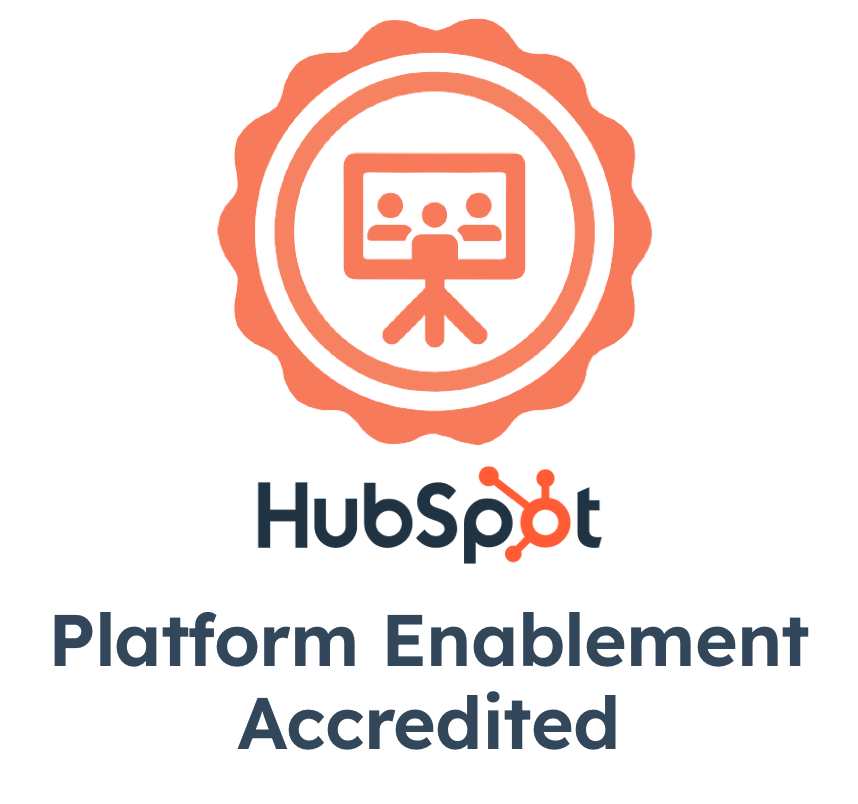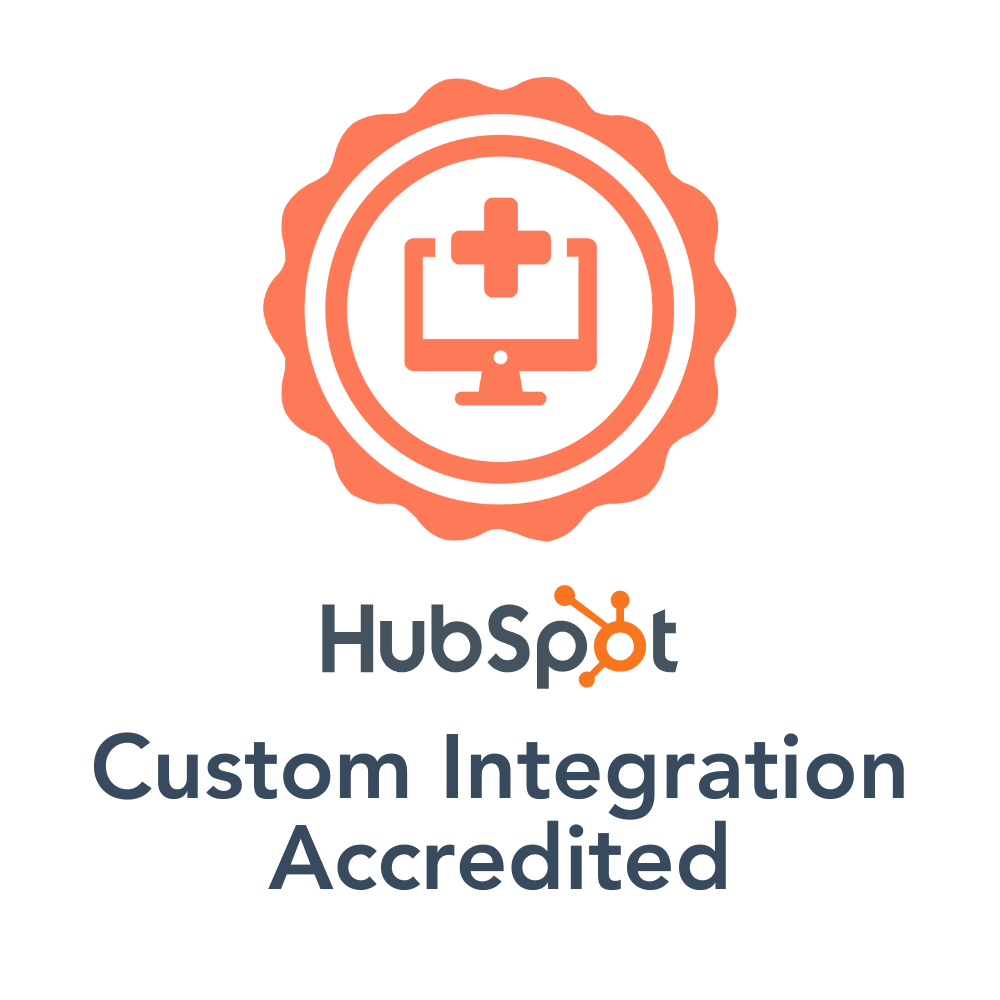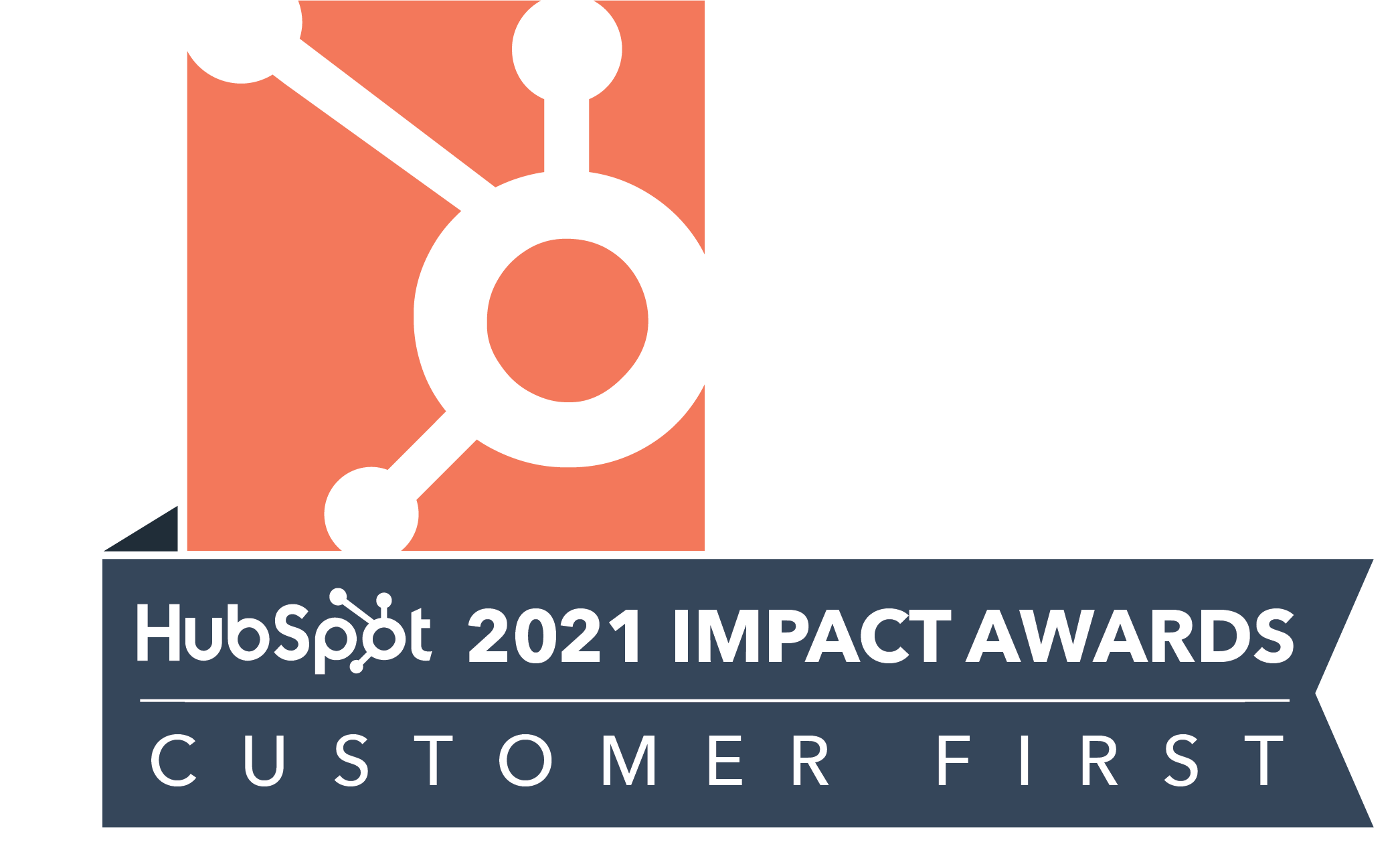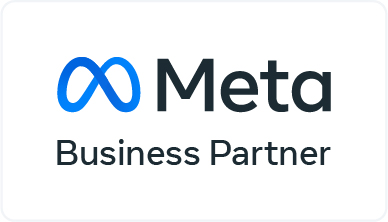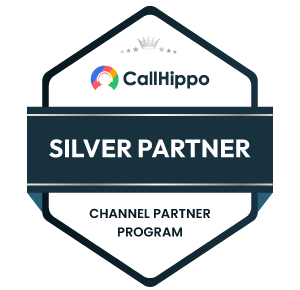Hariharan: Hey, nice to be here.
Suma: So Hariharan actually started out aspiring to be a cricketer. But when that did not pan out, he discovered his strength in writing, storytelling, and persuasion, skills that made marketing a natural fit for him. Over the years, he's built a rich and diverse portfolio, having worked across B2B logistics, pharmaceuticals, and retail industries, before finding his true calling in the education sector.He began in the preschool marketing space, helping grow and expand OIP Play Schools across India. It's currently known as First Prime Teletots. And then went on to lead marketing for Oak Ridge Schools and the North Anglia Education Group across India for over eight years. Today, he heads marketing for India at the International Schools Partnership. A global network of over 100 plus schools across 25 countries. His expertise lies in building impactful brands and driving business growth. And I would also like you to say hi to Adarsh Narona, my co-host from HubSpot.
Adarsh: Always a pleasure, Suma.
Hariharan: Hi, Adarsh. Hi, Suma firstly, I would like to start by saying thank you for inviting me for this wonderful podcast. I'm really looking forward to, you know, sharing my thoughts, my experiences and and mostly, you know, have some fun during our conversation.
Adarsh: Absolutely.
Suma: Absolutely. So you want to dive in and tell us about ISP and what is your role there?
Hariharan: Yeah.Sure. So International Schools Partnership, ISP, is a global schools group. They've got about 110 private international schools spread across 25 countries. I had the marketing for the India set of schools. We've got about four schools around 12 campuses, four school brands, and 12 campuses across five cities. My role there, you know, I like to, I was telling others before we started the podcast today, ⁓ you know, want to keep, ⁓ my response is very simple. I think a lot of times you end up overcomplicating your responses with a lot of jargon and stuff. So the way I look at my role is that I think to bring out all the amazing stuff that's happening at our schools. Right. Kids are doing wonderful things, innovation, stories, achievements, events, and et cetera. And I think my job as an edu marketer is to bring out all that amazing stuff out there. And I think that in itself helps position the schools in the market. I think I would say in a nutshell, that's probably my role at ISP and within the education marketing space.
Adarsh: That is awesome Hari, So privileged to be talking to you because whenever I've met you I've always taken a lot of notes back based on your experience in the industry. We are seeing a lot of transformational pieces happening in all industry to be honest and EduTech is not an exception to that. But what is brilliant to see is how companies and institutions like ISP are reacting to this transformation and riding the wave. You are not being left behind. And I think what for me, biggest takeaway on behalf of the audience who's listening would be to learn the best practices how you are shaping ISP to take on the future, take on this transformation stage, take on this AI wave to be more personalized, how you have built structures and frameworks to do some of the best practices in your processes. All these things will be really golden nuggets for us to take at the end of the podcast. So I'm very keen to hear more of that.
Suma: So shall we start with also talking about what led you to this point? What is your background like? What is your journey been like?
Hariharan: Yeah. So Suma,I think you've kind of put it well in my introduction, know, a cricketer to being a marketing guy. I think that pretty much summarizes my journey. So, you know, in short, I think I, I think when I started off, I think my parents were very ⁓ keen that along with education, sports should be a very integral part of our lives. So me and my sister were roller skaters, you know, We started off as roller skaters. We also represented at the national level. And then I jumped into cricket, ⁓ played professional cricket for a very long time at the state level. And when that probably didn't, I would say it didn't go as per plan, I decided that maybe I should do an MBA. And then I picked Australia. Don't ask me the reason I picked Australia, but probably because Australia has two things. It has cricket and it has beaches. So maybe that was the reason for the choice at that time. And ⁓ I think when I went to Australia to do my MBA, I think that's where I found my passion for marketing. Until then, I wouldn't say marketing was something ⁓ that came to me. And interestingly, I found the passion for marketing not in the MBA classroom, but outside the classroom. So I think when you go abroad, you know, a lot of us do a lot of part time jobs, right? To kind of, you know, pay our rents and take care of the bills and all. So I would say I, it was a very interesting phase where I got to work at a restaurant. I was selling perfumes on shopping mall floors and I was also doing door to door sales in the suburbs of Australia. Now the exciting thing is I think.
Adarsh: Yeah.
Hariharan: through this process you learn the art of connecting with people. And I think that's how I learned my sales skills and all the things about how do you communicate about your product or whatever you're selling to people. In a very short span of time, I think that's how I learned through all these wonderful part-time jobs that I did in Australia. And I think after that, when I came back to India, I said, okay, I think marketing is my calling. And I started with the B2B marketing space. I worked in the pharma, logistics sector for a while. But I think I always wanted to be more towards the B2C space, closer to customers to probably be associated with the product or the service, which is more relatable, which is more everyday, which is more exciting. And that's how I came upon education. And I saw this exciting opportunity to be a brand manager at a play school. You know, so I think when I joined that's OI Play School, which is open interactive, which is now the first cry IntelliTorch. So that's where I started my journey. And then since then, you know, from ⁓ open interactive play schools to Oak Ridge, North Anglia, and now with ISP. I think the reason I kind of stuck with education for, I think I would say a good over about 12 plus years is because I think. It's every day is exciting. You know, like I was telling at the beginning, there's always something happening at the school. There's events, there's fest, there's activities and all. So it's always exciting. And it's also a very relatable field, right? You know, unlike, you know, whether you're doing IT marketing or something, you've all done schooling. We know how the school vibes are. And to be able to talk about this every day, I think it's exciting. I think that's what kept me, I think, hooked on the education marketing space for so long. Yeah.
Adarsh: That is such a beautiful background and the way you narrated the ending of it. It suddenly got me into thinking, yes, it's so easy to relate an experience that you have gone through. Now you're contributing to improve the same industry. It must be amazing. And I wish you were also playing alongside Virat Kohli and we got to see you. But nevertheless, I hope you are still playing.
Hariharan: I hope so.
Adarsh: in whatever levels and opportunities you get. That's an inspiration. I'm sure for every Virat Kohli there are 10,000 who couldn't be, but they're still doing their best, learning from the sport. Because I think there's always a brilliant learning that happens if you're a sports person. And that takes you across your life. And your introduction itself shows us how aware you are as a person, your perspectives. Will really matter for those not just in the edu tech sector but no matter what marketing we are doing which industry we are there are a lot of tips that we can take. I can foresee that already from there. Suma your first thoughts listening to Hari's
Suma: No, first question for you,
Adarsh. What did you play? Are you a sports person?
Adarsh: I am, I play tennis but I am also like Hari, an outdoor person. It's a fundamental right of every Indian boy to play cricket. So we have done that. But I was more of a soccer player as I was growing up. But eventually I've become a tennis player. I think the biggest learning is how to deal with failures and losses and near misses. And to be a team person. That...
Hariharan: Hahaha
Adarsh: all of those learnings automatically come to you when you play for a team, when you lose games that you should have won. To be able to leave that behind, like I remember Roger Federer saying in one of the speeches, he's lost close to 50 % of the points he has played, which means for every point he has won, he's lost one. It is incredible to know how to put behind a loss and to go for the next point. I tell that to my team as well. Every time you have a negative vibe on a call with a potential prospect, if a salesperson, you have to let that go, that experience, because the next person on the phone deserves the full you, because that could be a positive conversation and they don't deserve to have a baggage of you from the past. That learning is amazing, isn't it? So you can always give your best. And I see Hari.
Suma: Exactly.
Adarsh: When he talks about the edu tech sector, I'm sure there are so many failures he has seen himself or others go through and that's an opportunity for him to say, all right, what can we do to avoid this failure again? There's an opportunity for AI coming. What's that I can do to improve my game? Right. We always strive to improve our games as a sports person. Here also it's no different. That's what I feel. Suma, did you play something smart as a kid?
Suma: No,not really. Only those things like marbles and pithoo and those kinds of things. That's about it. Now I'm into Tai Chi and Qigong. So yeah, that's what I do.
Hariharan: Those are fun sports as well.
Adarsh: Yeah, fun,
Hariharan: That's nice.
Adarsh: Getting back to the conversation you had based on your experience, you mentioned about First Cry ⁓ as well, which led you to start with a PlaySchool brand. What do you feel are the top changes that you're seeing right now in the K-12 space? ⁓ Any trends that you're seeing, Hari, that we can probably start with?
Hariharan: Sure, I think marketing in general and not just in the education space, marketing in general as you guys know it very well has gone through a real sea of transformation. ⁓ When probably 15 years ago when I was presenting ⁓ to my management. The marketing plan would essentially involve things like, hey, here is a newspaper ad series that we're going to be doing. This is a season we're going to be doing in probably a couple of events and that's pretty much it. And there was no way if somebody would ask me that question 15 years ago, Hari, how would you track the impact of these newspaper ads? I probably didn't have a great answer, right? The only way to do it is like, okay, how many people called you or how many people visited the week over? But that's very weak data points. But with the rise of technology, the rise of the way people are consuming ⁓ information today, and the rise of all these platforms, be it your Meta, Google Analytics, and all these dashboards that are coming in, I think today you have a lot of metrics ⁓ for a marketeer to look at. ⁓ So I would say I think one of the biggest changes I have seen is marketing has become data driven. you base your marketing investment decisions based on multiple data points. What are the campaigns I would want to invest in? What are the channels I want to invest in? And these are based on solid data points that we get thanks to multiple CRM tools, multiple dashboards and things. So I would say, think that's the first big sea change that I have seen. The second important thing is I think earlier, It was pretty much like one size fits all. would create content that appeals to the entire audience base. Now, marketers are realizing and even within the education space, you realize you cannot. Create one school brand video and say that okay it's going to appeal to everybody else. Somebody is inquiring for grade 1, somebody is inquiring for grade 9 and grade 11. Now what they are interested in from the school is changing right. That's a very different set of prerequisites that they have. So understanding whom you're talking to and then curating content for that, that's something that we're all doing more so now today than before. Second is also understanding what stage of the buyer journey they are in. If they've already visited your website, they're already in your pipeline, a very advanced stage of buying, you don't want to be boring them with something else. You want to be talking to them. What are the five reasons why they should probably select the school or a conversation that is relevant to them at that point. I say that second is that's the second trend like to really curate your content to the stage of the journey and the kind of audience you're talking to. And I would say the third thing is also how you're going to communicate this. Earlier what would happen is you know people you know the way I put it in a way I tell people is that you know, when a branding person and a marketing person gets involved, in fact, you take away storytelling out of it because then you bring in your photography crew, your videography crew, lighting, everything is curated and all of that. And the authenticity just leaves the door. Right. Today, I think people love authentic storytelling. Anything which is very authentic, very natural, ⁓ you know, actually gets more eyeballs. So in fact, if you see today's social media today, most of the school brands, hey, we did the annual day. We had a sports day. Here are beautiful pictures taken by the photographer. It's put up. That's your social media. But does that get enough engagement? Probably the answer is no. But if you were to do a behind the scenes video of the prep going on for the annual day. It's, you know, preparing in the classrooms, teachers guiding them. And you put that out, I challenge you that that's going to get more eyeballs because that has a better story to tell than the final output. So I think that kind of very authentic storytelling, I think is what's changed. So I feel that, you know, one, the, the, it's become more data driven to
Adarsh: Absolutely.
Hariharan: People are creating a lot of more personalized content based on the user journey. And there is more authentic storytelling. And I would say these are the three big things in my view. I've seen change over the last 10 to 15 years.
Adarsh: Are those are amazing pointers to be honest and we would like to dig deeper into some of them especially how The data is now being collated and it's coming from different structured sources Unstructured sources and the technology providers like up spot and many others are working towards leveraging the new tech in town, the AI to be able to gather the data from all these sources and then provide some kind of a meaningful situation for everybody to make a decision. So we will touch upon that ⁓ in a while. What I wanted to go deeper was the last point you made about the original storytelling or the authenticity that brings in a story that is that is real, is happening and that is original to you. Because I was inbound recently and I heard somebody speak, won't be mentioning them. But I picked up a piece that they mentioned, it was a long lasting effect in the crowd. They said, now we are moving towards an age where information, knowledge will be commoditized. Like how you have water, electricity coming in.
Adarsh: everybody will have the access for the same information, same knowledge, same tools, platforms, whatever you call it. So you'll have to imagine a situation where even everybody has everything coming in a metered way. How do you really use that to provide value better than let's say your competitor? And the only leverage you have is what is original to you, what is unique to you. So, Hari when you gave that example of the prep work happening in a school environment for a potential school day. Now school days are the same across schools more or less a bit here and there but essentially the way I react emotionally to a school day function sent by three four institutions will be very similar to an outsider.
Adarsh: But if I see what was happening to get to that, that will be very unique. That will be very different. Now you're talking about credible content that will bring more points to viewers who will watch, who will be emotionally connected to you, who will understand the real life situation. And it doesn't seem like you fabricated or polished or you AI enriched, whatever they say. So that is such a beautiful...
Hariharan: get to. Yes.
Hariharan: Yes. Yes.
Adarsh: point of view that you gave us. I'm sure the audience will also double down on that because what is original to you is very difficult to be copied. And I think that is where the world is moving, especially in hyper-personalization and original content. Suma, your thoughts?
Hariharan: Exactly.
Suma: Yeah, I think like you said, authenticity. I think the only leverage you have is that you are you.Right? And if we don't go deeper and deeper and deeper into what makes us stick, we're going to lose the plot very fast. Especially with this AI and videos and you know, the Sora tools and everything coming in, it's going to be so difficult. So the storytelling is going to be now.
behind the scenes, what's happening. I think even in our Bangalore event where Hari was a speaker, Sunita also said something similar. She was from IIT Madras and she was saying that we were, you know, how you tell the story of how a child is learning is what is most relevant to a parent. They resonate with that. So tell me that story and I will come to your school, right? So that way. So yeah, those stories are going to be. I'm so excited to see these authentic stories now take over. You know? ⁓
Adarsh: Switching back to the data point that you mentioned Hari, yes there are easy data sources that you get your admission forms that the parents fill for students. You have other kinds of information that are really in a file structured way of getting it and most of the time your analysis was only on that. Website visitors are becoming lesser, search engines the clicks are becoming very less. ⁓ Who thought two years ago you would go to Google and actually search for something and not go two clicks below? Right? It's happening. I think recent studies had 60 to 70 percent of the folks just get that synopsis from AI as the response. They don't even go to the second click. There are no clicks happening. So the entire revenue stream for some of these companies is changing. The behavior of a prospect or a potential customer is changing.
Hariharan: Yeah.
Adarsh: becomes very difficult for a marketer like you to find the persona that you're chasing, where the persona is, what the persona is reading, where do they connect, the multiple touch points that you'll have to create. Are you thinking around these lines, in ISP? What are the things that you're thinking about reaching to a persona at multiple places?
Hariharan: Yeah. Yeah, I think definitely, think AI is changing the way we are thinking for sure. Like you make a very good point. Today, chat GPT is the most handy thing on my phone right now for a lot of things. ⁓ So the question to ask is earlier I would search what's the top five best Cambridge schools in Edinburgh on Google.Right and then I'm competing with these multiple listings of you know search engine optimization comes in and you know how effectively you're doing it. Today the question is what is it that you need to do for chat GPT to put it up as your school on those five lists right. So, I think for marketers how you get into that is very critical because like you said there's an increasing number of people. Who are moving towards, you know, chat GPT, perplexity and all of this as sources of information from probably platforms earlier. So, I think that's one thing that is definitely people are working on not just within education space, but across multiple industries. And ⁓ the second thing that is very I think you, since you mentioned about customization and personalization, right? Now the best part Adarsh and Soma is that with a lot of these CRM tools coming in, right? And you have all these little metrics that is coming in. So the CRM gives you a complete touch point of that particular user journey. Okay. He's come through your website. He's seen your email twice. He's read your WhatsApp. He clicked on a link.On your landing page now you are able to see that entire user journey and you are now also able to assign a score for that user journey saying that hey hang on based on these 6 touch points I can give this ⁓ particular user a higher score. So, that gives a lot of intelligence to your sales teams to know who are the high potential leads and who are probably the medium and low potential leads. So I think that's where I think a lot of these tools are becoming handy where you're able to take multiple data sources and then know the user journey and based on that, ensure that you're spending maximum effort on inquiries that will have a high potential for conversion. So I think these are this has probably been one of the biggest benefits I have seen from CRM tools that we've experienced over probably the last two to three years.
Suma: think the other thing ⁓ that CRM tools like HubSpot bring into the game is that once you have your data coming in very structured or you're collating it nicely inside the CRM, then it becomes like a gold mine. Like you don't even know the personas who are actually coming to your website. You have a persona in your head that you know I'm going to target this sort of a family and this sort of a family. However, some other new persona has shaped up, some other type of family has started coming to your websites and they seem to be more engaging or they seem to be moving faster in the pipeline. And that's a story that CRM is holding there. now ⁓ AI coming into doing all the work inside like Breeze and know, chat GPT and Claude. Integration with HubSpot, you can get that information now that you know you have all these people also coming into your website or into your pipeline. That's like a really big shift that we are seeing as a service provider.
Hariharan: And if you dwell a little deeper as well, mean, within these user journeys, you also know what kind of content they're consuming, right? What pages of your website they're visiting. If they're predominantly visiting pages like, you know, what are your academic grades like, or our results like, what's your teaching methodology? You almost build a persona that it's a very academic oriented parent.
Suma: Correct
Hariharan: you know you are very traditional Lord how can my child get great grades you know in exams and stuff. So then the kind of content you actually use them for nurturing is entirely different and if a user is you know hovering and liking all the content on your website or on your emailers which are more relevant to international opportunities right like you know how can my child you know take part in different co-curricular programs and stuff like that then the content you could curate to them is entirely
Suma: Correct.
Hariharan: entirely different. So I think it's I think like we spoke earlier, think thanks to all the you know the metrics and the data that we have today, it is really informing a lot of the content production decisions that we are making. So I think that's that's a big game changer I would
Suma: So, Hari, what is the tech that you use in schools when parents are coming and visiting? Do you use some sort of technology to capture because it's then offline to online? You have to bring that data in. Do you do something for that?
Hariharan: Yeah, absolutely. I think so much very vital as well that tech is there on all stages of your journey. Like for example, if I'm talking about that, we've got innovative teaching in our classrooms ⁓ or innovative, the way we teach subjects is quite innovative. So when they're visiting our school, they've got to see some reference to that. Right. So we're definitely, you know, using embracing you know, know, kiosks, digital kiosks where people get to see the different things that's happening in the school, know, seeing classrooms and actions and things like that. The other important thing that I've seen is also QR codes. ⁓ I think a lot of brands are embracing QR codes, right? I mean, if you imagine a scenario where in which you are walking through the school and you have a QR code scanner there, which you're able to scan, And it gives you a version of what that space contributes to your child. Right. That's really bringing in tech into school tour experiences. I think that's, that's the, I think the bridge I am seeing, ⁓ you know, because you cannot be very tech oriented in your top of the funnel, middle of the funnel. When it comes to your, what of the funnel purchase journey, you're completely going traditional. think that's not an option anymore. You still have to bring in.QR codes, digital kiosks and all of that. So I think I would say those are the couple of things I would say ways I would say schools and brands are actually using tech during school tour experiences.
Adarsh: Hari, generally when audiences have listened to Suma's podcast, feedback that they've given us is on the take away from the podcast. Everybody likes to ⁓ get something around the best practices that they as marketers can use. ⁓ And since you have been there in the system for such a long time in that industry, you probably get the pulse of not just how it was, how it is, but what it will be. So while we will hold back the questions on what it will be down the line and your anxieties for the future or your bets for the future, I'm very keen to hear from you any framework that you follow in your role, current role at ISP. That is evolving or evolved that you can share with the audience around best practices, around things to take care, around some of the fundamentals that you go back to every time that you launch something, you plan something, or you execute some campaign.
Hariharan: I think that's a great question, Adarsh. I think one of the things not just, I would say, for education alone, ⁓ but for marketeers in general is that marketing is not going to be one ad, one event. You know one campaign I think you always have to think of marketing as a cohesive strategy and one of the favorite terminologies that for me is you know the consumer experience journey you know right from the time they get to know about you, let's say for schools in general, let me take schools as example. Right at the awareness stage, how are people finding out about where or which schools do they send their child to? One, they're talking to people at their office. Two, they are talking to their neighbors. Three, they're probably even looking at buses that are coming into their gated community. What are the buses that are frequently coming in and out? That's building their awareness about the various schools. Right. Then comes in all your brand awareness pieces. Like they're seeing a lot of brand recall ads on, whenever they open their phone, the WhatsApp, YouTube, wherever it is. So all of this is building their entire awareness. So you, you almost have to think like a journey. Right. And now they said, okay, you know what, these are the two, three schools that I, I really, you know, probably looking at. Right. Then they're starting to show intent towards those schools. Then you probably are looking at, that's where your lead nurturing, your automations, all of that kind of comes in, right? And then you get into where they're actually visiting your school, right? And then what are the kind of touch points you wanna have at the school level? What do you wanna talk about, et cetera? And more importantly, I would say I think...
you often are always looking to looking at marketing to drive new admissions, but marketing has a role to play in also retaining consumers. And especially in education space like I would say in most spaces, think getting a new customer is very expensive, retaining somebody is you know more economical. So, I think Retention is often quite an ignored subject within marketing. Marketing is often associated with, how do you fill in the bucket? How do you get in more people in and et cetera? But what you don't understand is the equation. If more people are leaving, there's more pressure on marketing to keep filling that bucket, which is already leaking. But if you control the leak, probably the pressure on marketing to actually deliver new. Admissions actually fund goes down big time right. So, I think marketing has a role to play with retention as well how do you drive brand advocacy, how do you use parents as influences for your brand right. So, if you in a nutshell I think you I think you will have to think of it as a journey ⁓ right from the first touch point to the last touch point. You know, awareness, consideration, purchase, school tour experience, how is it, what are you telling them at the school? And then finally, you're looking at, you know, advocacy. How do you drive advocacy? How do your existing parents become your ambassadors? And I think if you're able to ⁓ look at where exactly your idea, your initiative or whatever you're thinking about falls within that experience journey, I think you've pretty much then there is a science behind your strategy. Otherwise, it's just pretty much marketing. You can just create an ad, push it out there, see what comes out. I think there's no science to it. I think you'll have to think of it, OK, if I'm running an ad today, are the people in the school talking the language of the ad? I cannot go out on an ad and say, we are a brand that is known for something.
Suma: Exactly.
Hariharan: And when they walk into the school, your admission officers have no clue about it. So I think my big takeaway for not just education marketeers, also other marketers who are probably watching this podcast, is you always have to think of marketing as a journey and not as an isolated initiative or an effort.
Suma: Yeah.
Adarsh: That is an amazing framework and I'm sure even if you're a marketer who's listening here not from the Edutek industry you can really resonate this framework in any of the verticals that you work for because as representative of Upspot as a platform provider to helping companies grow better I am also always chasing the similar metrics to acquire a customer it costs X but to retain a customer and then grow them for really ⁓ long term revenue from them more so their word of mouth that goes into the market and then we bring more customers because of their success stories and eventually the customer advocacy you said the ROI on that and the retention that we do is more benefit to a P & L than to acquire a new customer from scratch. So that is such a valid point and unfortunately a lot of companies that have seen they neglect on this gross revenue and they're always chasing net new logo acquisition, net new revenue, the metrics for people who are working or in sales or growth regions.
Hariharan: true. Yeah.
Adarsh: They are also structured that way. If you could really have a hole as a bucket, right? The leaky bucket that you spoke about. Imagine the power of your growth trajectory when you can focus on net new, but also retain customers for life. We've got customers for life is a very underrated piece of our business in most of the places we go. Successful companies have figured this out very early. So we call ⁓ in Upspot we have coined something called a flywheel. So the amount of force and input you give to let's say sales or marketing or your service organization, it's a joint effort. It's never a funneled approach anymore. It's never top of the funnel, middle of the funnel. All right, we'll filter it down to so many new cuts.
Adarsh: Every piece of your business needs that impetus you can't peanut butter everywhere Obviously you have to take your bets depending on where you are in your growth story, your industry, your competition. What are you fighting what your persona? ⁓ brings to the table etc etc, but it's it's a it's a separate podcast altogether Thank you so much for giving us that framework and I'm sure Suma is waiting to ask
Hariharan: Absolutely, absolutely.
Adarsh: the future through your eyes for the industry, for the edu tech and what keeps you up at night. Sumail over to you.
Suma: Yeah, what are you excited about and what are you anxious about?
Hariharan: There's a lot to be excited about because I think now with the way AI is shaping up, ⁓ I think things are getting much more faster. think ⁓ like HubSpot, there's almost of the platforms, other platforms today are able to curate content very quickly based on user personas. ⁓ And I think that things like that is very exciting. In fact, I'll tell you recently, of course, I can't name who I was talking to, but they had recommended the idea of a virtual counselor. And this is an AI avatar that can come onto your website. So the moment I come onto the website, no more boring inquiry forms or chats and all of that. There's an avatar that pops up and then talks to you. About your school, the choices that you have to make, the questions that you have and everything. So that's a very immersive experience ⁓ to have at your very first touch point with the brand. So I think there's a lot of exciting things that you know will soon see a lot of brands embracing. ⁓ I think what probably I think to your second question Suma on what's probably keeping me up in the night is I think especially with education, ⁓ think there's a lot of human element to it. Right. You have teachers in the classroom and you we've we all know right the impact some of the teachers have had on on our lives and the classes that they've taken that we even remember till today. So in terms of education delivery, right, I think it always has to be a very balanced approach. There's a lot of tools that are coming in terms of, know, how do you improve student assessments better, you know? automation of reports and all of that. So, I think in terms of education implementation, I think it has to be a very balanced approach where you are bringing in technology that aids and supports teachers to deliver better classroom experiences, but you do not take the human element out of it. I think the more you do that I think. the quality of what the child is learning I think might deteriorate again this is my viewpoint on it. ⁓ So, I am definitely excited about from a marketing standpoint what are the things that AI is bringing in, but from an education delivery standpoint I think you have to be very balanced in what you are implementing ⁓ and ensure that the human element ⁓ takes precedence over technology.
Suma: Especially with, you know, this new generation being exposed to so many things, so many things that they're probably not equipped to handle and teachers will be the first, know, bastion who can actually help them out here. So we really cannot just have, you know, use AI for everything. It cannot be that. And it has to be the teachers bringing in their empathy and their way of handling. And that's becoming even more important, feel. So yeah, I agree with you Hari Hiran on that. Excellent. Adarsh, do you have any more questions for Hari? I think I'm good.
Adarsh: Yeah, I am so thrilled with the learnings I've had. To be honest, you've given us more insights than what we knew about how the marketing is thinking in the eduTech sector and how prepared you are to, like I said in the beginning, the way of what transformations that are happening in the tech world, especially AI enabled initiatives that you can take. But keeping the fundamentals very clearly. like your hyper personalization with original credible content that is amazing the type of content no matters because the consumption by your personas is changing where they are what they read what appeals to them is no longer very stereotypical like good old days it's changing rapidly and the impact you can have one-on-one but
Adarsh: make it look like one on one but for you it has to be a science behind it and that was a great takeaway for me. I'm sure I'm looking forward to the audience who will listen to this podcast and share their feedback. Many might write to you in LinkedIn and ⁓ prolong this conversation further, debate, brainstorm and we'll make new friends because of this episode. So thank you so much Hari for the insights you gave, the time you took to join us.
Suma: Thank
Adarsh: in this podcast. Thank you very much.
Suma: Thank you, Eddie.
Hariharan: Thanks Adarsh and Suma for having me on this podcast. I truly enjoyed our conversation. Thank you so much.
Suma: Thank you, Harry, for joining us.

